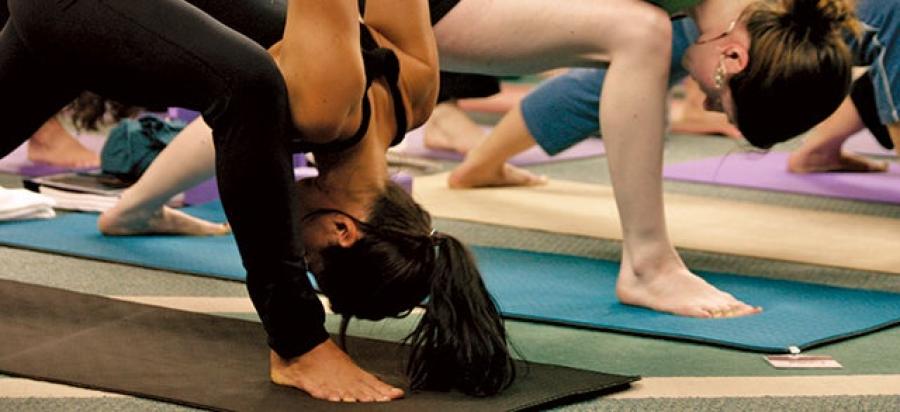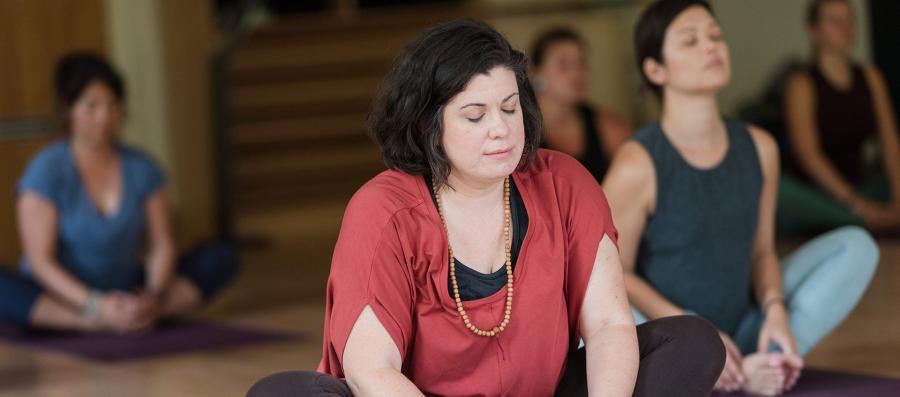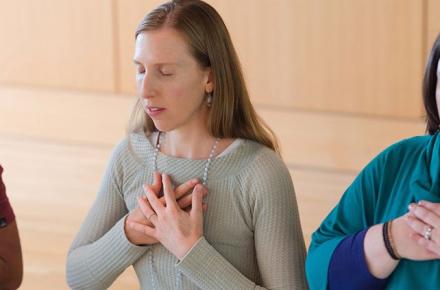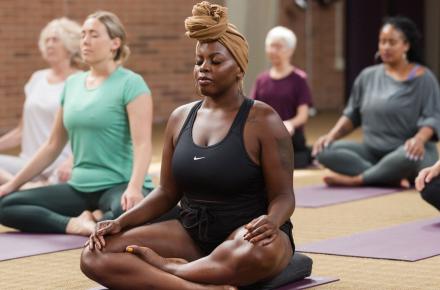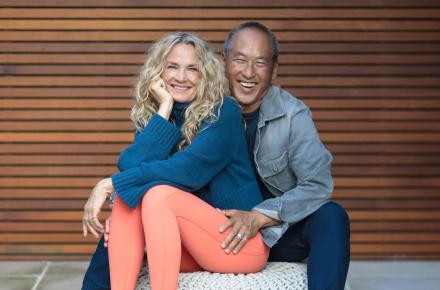You Don’t Have to Be Flexible to Do Yoga: Debunking the Myth

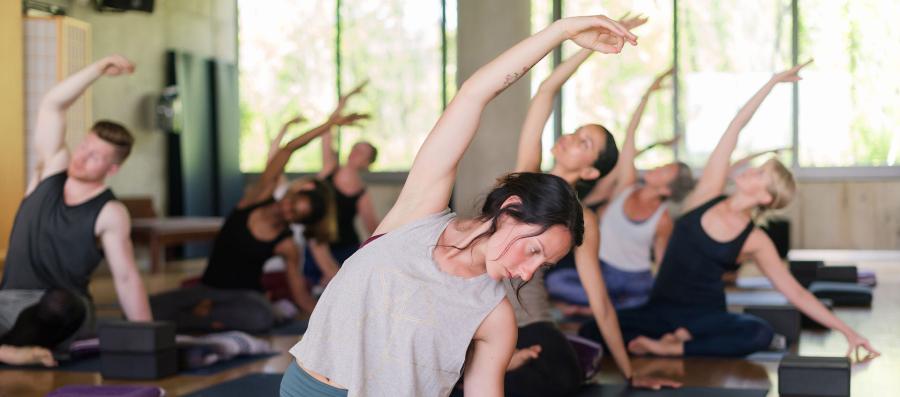
The stereotypical image of a yoga practitioner is a flexible person doing a challenging posture. We’ve all seen them—glossy photos of slender bodies with limbs wrapped around torsos. These images perpetuate a myth that yoga, and the benefits of yoga, are accessible only after you’ve mastered complex asanas. Nothing could be further from the truth.
It’s a common misconception that you’re not doing yoga properly if you can’t touch your toes or do Wheel without props. Let’s say you’re in a yoga class and are being led in Tadasana, Mountain pose. You bring your arms alongside your ears and attempt to interlace your fingers in Steeple position. This is what you’ve been taught is “proper” Tadasana, and the woman in front of you appears to be doing it effortlessly.
But have you asked yourself how this shape feels? Is there strain in your shoulders? Does your breath feel short and ragged? Hopefully, the teacher notices you and advises you to release your fingers and widen your arms to encourage a softening in your shoulders. This feels better to you, and your breath is smoother. But you might still be asking yourself, Am I doing it right?
Let’s say the class is guided to sustain Mountain posture for the next 10 breaths. Everyone in that class, whether they have their arms above their heads or not, their fingers clasped or not, is feeling sensation. The longer you sustain a posture, the more intimate your relationship with sensation and feeling in the body becomes. The range of motion in your shoulders may preclude you from interlacing your fingers over your head, but the sensation you’re experiencing with your arms held wide is just as revealing as the sensation felt by the person with their fingers entwined. It’s the sensation that tells us we’re opening, which helps us strengthen awareness and notice the flow of prana, the life-force energy. You, standing with your arms wide, are strengthening your capacity to be present in the moment. That’s the beauty and power of yoga: It meets you where you are, giving you the full benefit of practice, unconditionally.
Pushing Versus Experiencing
It’s only in our modern era that asana—the physical postures—has become the most dominant aspect of yoga. And it’s the Western competitive mindset that encourages practitioners to push themselves into deeper and deeper stretches. Flexibility is good—we want that—but flexibility needs to coincide with strengthening in order for our body to maintain balance and integrity in the joints.
An effective stretch requires a calm and relaxed nervous system; we don’t want to reach farther than we can breathe smoothly and evenly. Going straight for the biggest stretch not only puts us at risk for injury, but also lessens our ability to remain present and be informed by our own experience.
You don’t have to be an asana master to experience flexibility, and healthy flexibility doesn’t mean that you will become a gymnast. You might never be able to put your leg over your shoulder, but what’s important to remember is that your body will open as your practice develops. When you look back at where you began, you’ll see progression. As your flexibility and strength grow, the benefits continue. You will notice less pain and improved posture and balance.
Staying with the Stretch
How you approach a stretch influences how your body will respond. We’ve been taught to go to our edge, and that’s a great practice, but that’s not where we should start. Here are some grounding tips to help you stay with a stretch:
- Use the breath to move toward the edge of a stretch. Find a place where you can watch and feel sensation without the mind gripping or the breath shortening. Pause here and continue to breathe.
- As sensations magnify, notice if you are clenching other muscles. When the whole body is relaxed and calm, we can open more deeply into a stretch.
- Notice if the mind is pushing you to get somewhere. What happens when you slow down? Try closing your eyes, moving with the breath, and tuning in with curiosity to each sensation that emerges as you flow.
A Flexible Mind Is a Beautiful Thing
Another aspect of the self that becomes more flexible with yoga practice is that of the mind and emotions. You may find yourself becoming more empathetic toward your own feelings and those of others. You might notice that you’ve become less rigid in your thinking, less attached to your own ideas and understanding.
Whether your torso rests on your legs in Forward Fold or not, consistent practice can strengthen your capacity for navigating experiences, whether positive and challenging. This is transformation. Off-the-mat flexibility can serve our lives in countless ways, and you don’t need to be physically flexible to enjoy them.





